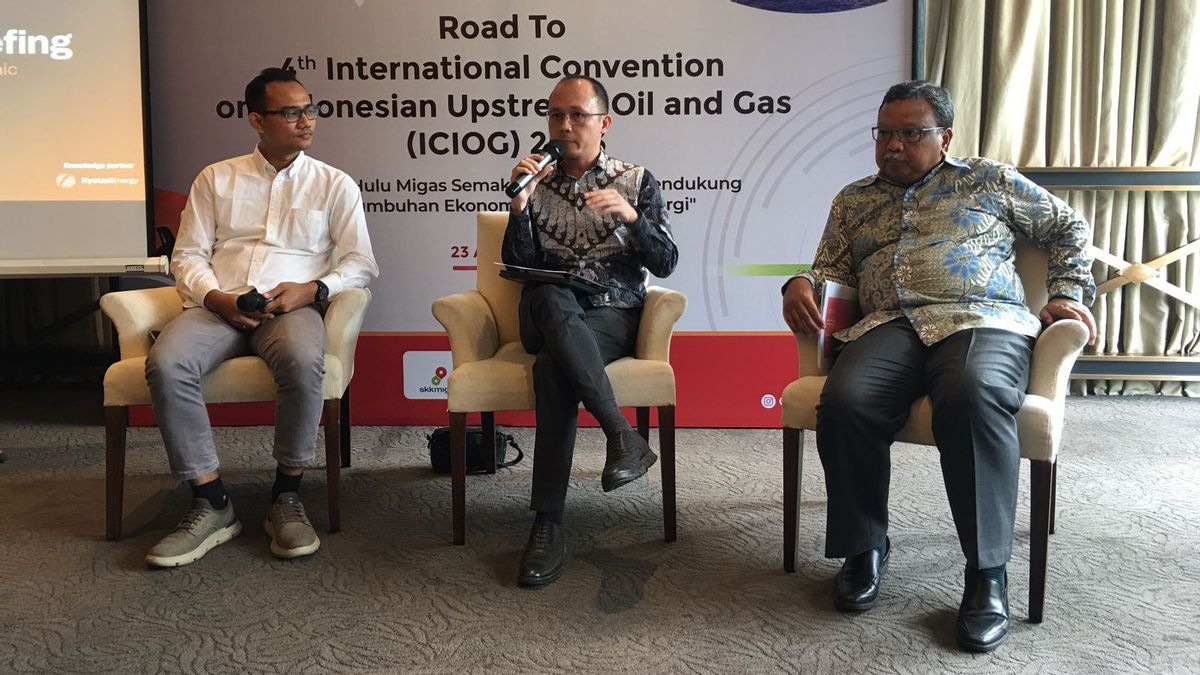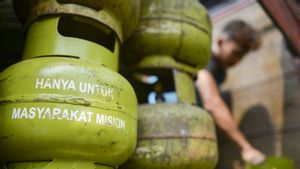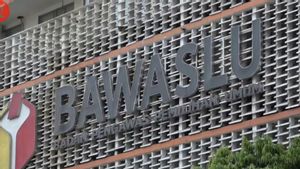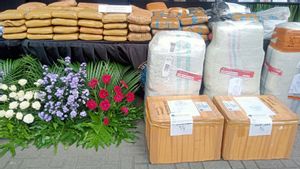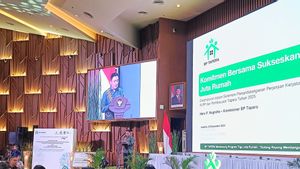JAKARTA - National natural gas production is still able to meet domestic needs, and can even be exported to other countries.
However, based on the results of research and analysis of Rystad Energy, natural gas production from existing fields is estimated to only contribute 35 percent of the total production needed to meet domestic needs in the next 20 years.
While the remaining 65 percent come from the production of new gas fields.
"This data shows the important role of massive exploration activities and the development of new oil and gas fields to delay import burdens," said Country Head of Indonesia Rystad Energy, Sofwan Hadi in Jakarta, Wednesday, August 23.
He detailed that so far, several new gas fields are in the process of being developed, including Andaman Field off the coast of Aceh, Mako Field in the Natuna area, IDD Phase 2 (Gendalo and Gendang) in East Kalimantan, Red Kido Smoke in Papua and Abadi Field, Masela in Maluku.
Gas production from the newly developed fields is projected to contribute about 60 percent to national gas production in 2030, and increase to 80 percent in 2035.
However, without the discovery of new reserves and field development, he said, it was feared that the spike in national gas production would only occur for a moment, before experiencing a decline by 2040.
"In fact, the volume of gas consumption is estimated to increase by 298 percent in 2050 as Indonesia's target to become one of the countries with the largest Gross Domestic Product (GDP) in the world," continued Sofwan.
Especially in the era of the energy transition to net zero emissions in 2060, the role of gas will be even stronger, therefore the development of gas fields must be carried out immediately.
The oil and gas exploration and production company plays an important role in the field development process through the acceleration of the FID (Final Investment Decision) considering that the majority of existing projects are still in the reserve discovery phase (pre-FID), "said Sofwan.
Based on data from the Special Task Force for Upstream Oil and Gas Business Activities (SKK Migas), natural gas has dominated the results of exploration activities in Indonesia in the past decade.
More than 50 percent of exploration wells drilled found new gas reserves, even in 2022 the success ratio reached 81 percent and until the first semester of 2023 the success ratio reached 100 percent.
Meanwhile, 70 percent of the total proposed Plan of Development (PoD) is the development of gas fields.
"Referring to the 2021 BP Outlook, Indonesia's Reserves to Production gas is twice as large as oil," said Deputy Head of SKK Migas, Nanang Abdul Manaf.
VOIR éGALEMENT:
According to him, gas potential must be produced immediately so that concerns about potential to become a net importer of gas in 2042 do not occur, and gas production continues to increase to meet domestic needs to be able to support the achievement of net emissions zero targets in 2060.
In terms of salur gas, gas allocation for domestic has also continued to increase in the last 10 years.
In fact, since 2012, the portion of gas distribution for the domestic sector has been greater than the allocation for export.
As of June 2023, national gas production allocated for domestic purposes this year reached 3,636.82 BBTUD.
Meanwhile, the portion of gas exported reached 1,960.71 BBTUD.
"The government is committed to continuing to meet domestic needs, where the current gas distribution has reached 65 percent," said Nanang.
The English, Chinese, Japanese, Arabic, and French versions are automatically generated by the AI. So there may still be inaccuracies in translating, please always see Indonesian as our main language. (system supported by DigitalSiber.id)
